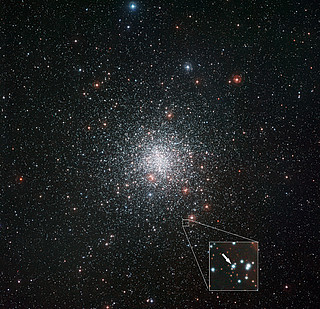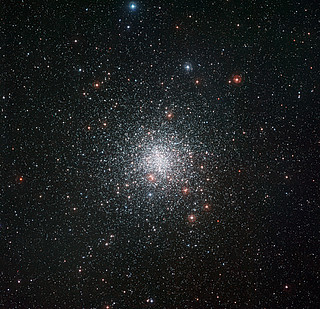On Earth, the element lithium has certain medicinal properties when applied to conditions like depression and bipolar disorder, and it is extensively used in the battery technology powering most of our portable electronics. In stars, the amount of lithium present is an indicator of the age of a star.
The older the star is, the lower the concentration of lithium measured in the photosphere – the part of the star that we can see. Typically as a star ages, lithium is moved through convective motion deeper into the star where the temperatures are higher and the element is consumed. When astronomers find a star that shows a higher than normal lithium content for its age, eyebrows get raised and heads get scratched.
After the big bang, the Universe (by mass) was about 75% hydrogen, 25% helium and extremely small trace amounts of lithium, all the other elements we have today have been synthesized in stars as they move through their normal life cycle. Elements heavier than iron are produced when the more massive stars explode as supernova. The first stars that formed after the big bang (called Population III stars) reflected the amounts of hydrogen, helium and lithium originally present. Second generation stars (Population II) contained higher levels of the elements heavier than lithium thanks to the first generation enriching the cosmos, but these are considered “metal poor” when compared to Population I stars, like our Sun. (Astronomers consider any elements heavier than helium to be metals.)
The planets that form around a star contain the primordial elements of the big bang, along with whatever new elements have been seeded in the protoplanetary dust cloud from novae and supernovae. Lithium is preserved in the relatively cold planets as they condense and solidify. If a planet containing lithium is pulled into its parent star, it will disintegrate, spreading its contents though out the star’s atmosphere. This mechanism can explain how a star can have a higher than normal lithium content for its age. But, this process is transitory. Eventually, the lithium will be processed by the star.
There have been two recent observations of stars that show higher than normal amounts of lithium:
One is associated with a red giant star (BD+48 740) that is suspected to have at least one planet orbiting it in a highly eccentric orbit. Dr. Alex Wolszczan, professor of Astronomy and Astrophysics at Penn State University, has led the team which discovered this youthful red giant. Evidence indicates that the star has a massive planet in a very elliptical orbit, which is unusual but can be attributed to gravitational interactions between planets in the solar system. This interaction may have contributed to another planet moving too close to the parent star and being engulfed as the red giant swells with age, giving rise to the higher than normal lithium content.
The other observation is of a star (#37934) in the globular cluster NGC 6121, also known as Messier 4 or M4. The ESO (European Southern Observatory) has released an image of M4 and discusses the surprising discovery.
This star peculiar in that it is exhibiting a much higher than normal level of lithium for the ancient stars (Population II) that typically make up globular clusters. In the paper presented on this observation the authors present two scenarios that may explain this star’s unusual concentration of lithium. The first is that the star formed with a higher than normal amount of the element – i.e. it was polluted by its environment. The other thought is that the star, for some unknown reason, hasn’t processed the lithium like the rest of the stars in the cluster. Both ideas are up for debate as there isn’t enough evidence to prove either one correct.
But, could this star have sacrificed one of its planets for a brief period of youthful lithium enrichment like BD+48 740? (This assumes that it has or had planets orbiting it.)

Star in M4 exhibiting higher than normal lithium levels. (Image courtesy of the European Southern Observatory)
Perhaps the discovery by Dr. Wolszczan and his team shows a stellar process that is more common than thought. If one considers the high number of planets being discovered by Kepler, which is leading astronomers to predict even greater number of stars with orbiting planets, this idea may be even more plausible.
Another case of the cosmos leading us down a rabbit hole just like Alice in Wonderland – the more we look, the more we see and the more questions we raise. The Universe just gets curiouser and curiouser!
Link to published papers:
BD+48 740 – Li overabundant giant star with a planet. A case of recent engulfment?
Lithium and sodium in the globular cluster M4. Detection of a Li-rich dwarf star: preservation or pollution?
Till next time,
RC Davison


